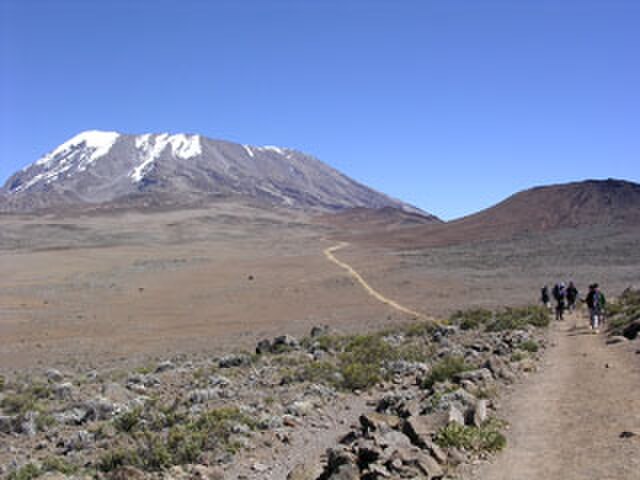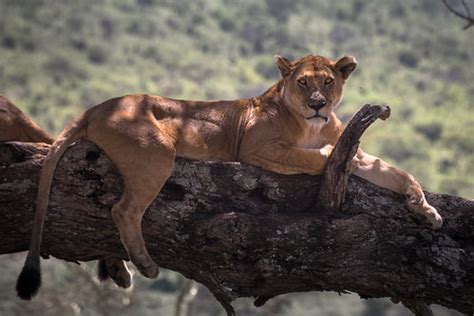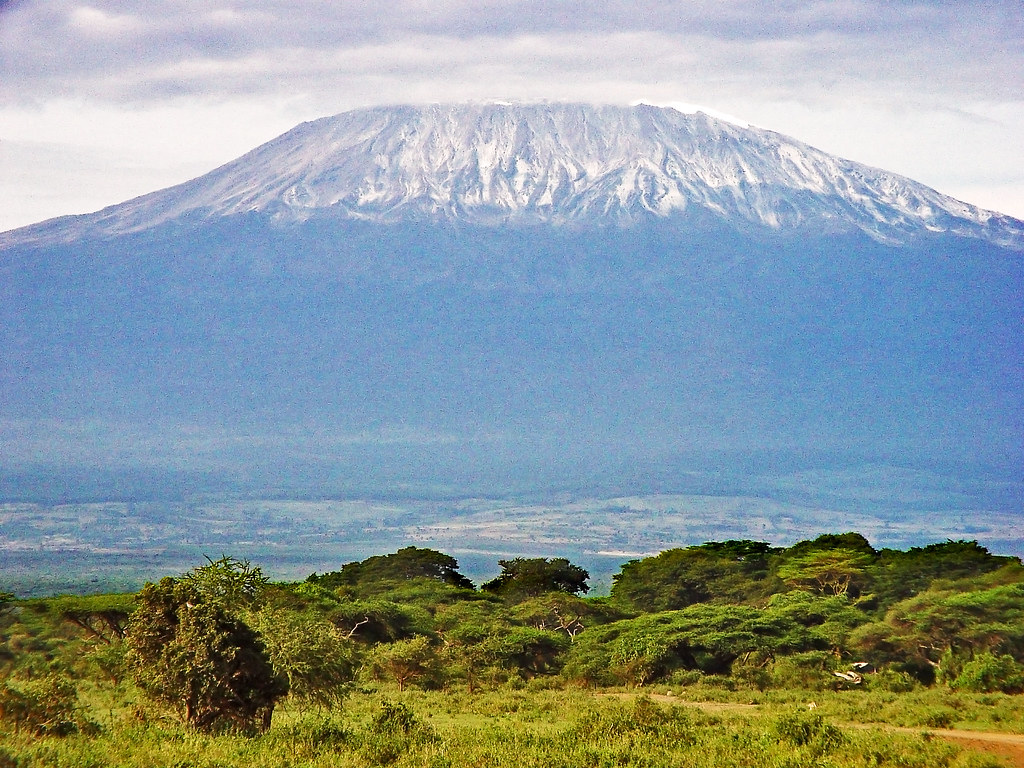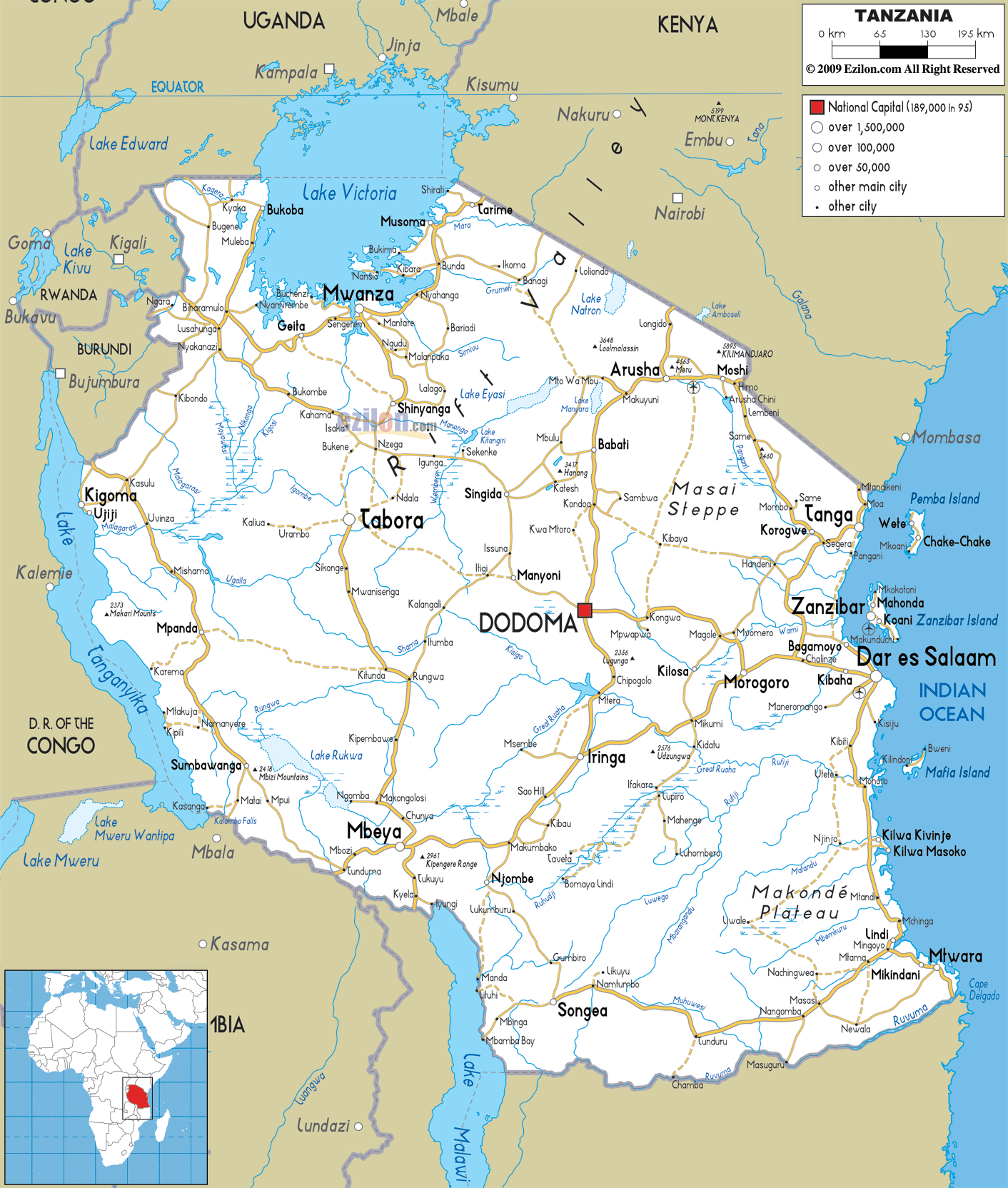What Is the Best Time to Climb Mount Kilimanjaro?
The Best Time to Climb Mount Kilimanjaro is from June to March. These months offer optimal weather conditions, including clear skies, minimal rain, and abundant sunshine, enhancing the Mount Kilimanjaro Climbing experience. But do remember that these weather patterns can shift unexpectedly, regardless of the season.
Technically, Kilimanjaro is accessible year-round. There are different Kilimanjaro Routes that can be used in the Rainy Season that make it more accessible and provide favourable conditions for the climb. Therefore, our trek experts at Wildman Safaris recommend hiking all year round. Try and avoid the primary rainy seasons, April and May are wise due to potentially hazardous trail conditions.
Clear skies and perfect weather conditions make for an ideal Kilimanjaro climbing experience
Climbing Kilimanjaro – A Month By Month Guide
We welcome you to our comprehensive month-by-month guide to Climbing Kilimanjaro. With this guide, our experts aim to equip you with the knowledge necessary to select the Best Time to Climb Mount Kilimanjaro based on your preferences and abilities.
Climbing Kilimanjaro In January
January is a fantastic month to undertake a Mount Kilimanjaro Climbing expedition. The weather during this month is generally dry, clear, and warm, thus offering excellent visibility for climbers. Kilimanjaro Temperature January is slightly higher, making it ideal for beginners.
Word Of Advice:
Climbers should be aware of any sudden weather changes, as storms can occasionally roll in from the Indian Ocean.
Climbing Kilimanjaro In February
February is also considered one of the Best Time to Climb Mount Kilimanjaro. The weather is mostly warm and dry with less cloud cover. However, hot weather can make camps and paths dry and full of dust, so people who climb should get ready for this.
Word Of Advice:
A suitable gear such as a buff should make it to your Kilimanjaro Packing List if you are seeking to climb in February. It will protect you against all the dust and dirt. Climbers should also be ready for any sudden weather changes, as February can occasionally bring high winds, particularly on summit night.
Climbing Kilimanjaro In March
While not typically recognized as the Best Time to Climb Mount Kilimanjaro, March can still provide a unique and rewarding experience for intrepid climbers. The Mount Kilimanjaro Weather this month is unpredictable, with a higher likelihood of rain and snow compared to January or February.
Word Of Advice:
Packing appropriate clothing that can withstand these conditions and quickly dry out. Don't let the possibility of wet conditions deter you; this month can offer some truly unique and rewarding experiences if you are well-prepared.
Climbing Kilimanjaro In April
April is the wettest month on Kilimanjaro, making it a challenging time to climb. But, if the clouds are clear, climbers can enjoy some amazing views this month. Experienced climbers who seek adventure often consider April a good time to climb Kilimanjaro.
Word Of Advice:
If you are still considering Climbing Kilimanjaro in April, then choose to hike from the northeast side of the mountain as they witness fewer rains as compared to the southern side.
Climbing Kilimanjaro In May
May is traditionally one of the wetter months. Experienced hikers might enjoy the challenge of hiking through wet trails in the month of May. However, in recent years, it has been a little drier than normal.
Word Of Advice:
Use Kilimanjaro Routes from the northern side of the mountain as the trails are not wet to such a greater extent.
Climbing Kilimanjaro In June
June marks the start of the dry season, the Best Season to Climb Kilimanjaro. The weather begins to dry up, attracting climbers with the promise of good trekking conditions.
Word Of Advice:
While the weather is typically drier in June, remember that the weather on Mount Kilimanjaro is unpredictable, so pack gear for all conditions.
Climbing Kilimanjaro In July
July, being part of the dry season, is considered the Best Time to Climb Mount Kilimanjaro for many climbers. Despite colder temperatures at higher altitudes, the month boasts predominantly dry conditions.
Word Of Advice:
Although July is one of the busiest months, keep in mind that trails are long which will allow you periods of tranquillity, even in this busy season.
Climbing Kilimanjaro In August
August continues to be a busy month on Kilimanjaro with dry conditions. It aligns with summer vacations in the US and Europe, making it one of the Best Time to Climb Mount Kilimanjaro.
Word Of Advice:
The trails can get dry and dusty, especially when the wind picks up. Therefore, carry a light buff.
Climbing Kilimanjaro In September
With an ideal setting for hiking adventures, September is often considered the Best Time of Year to Climb Mount Kilimanjaro. The weather in September is generally warmer, particularly at elevations above 5,000m.
Word Of Advice:
A longer acclimatization program (8 days) is recommended to increase your chance of a successful climb.
Climbing Kilimanjaro In October
October is a transitional month that sees the start of the short rainy season and the end of the dry season. The trails are not excessively muddy and the weather is comfortably warm.
Word Of Advice:
There will be occasional rain showers, which tend to be shorter than the monsoon season. We recommend Rongai or the Northern Circuit Route as they are more sheltered.
Climbing Kilimanjaro In November
November marks the beginning of the short rainy season. Still, this time has a unique appeal. The weather patterns are less stable, and you can anticipate daily rains, often during the afternoon.
Word Of Advice:
Be prepared for less visibility and potentially challenging conditions.
Climbing Kilimanjaro In December
Mount Kilimanjaro in December presents a warm and inviting climate, making it a sought-after time for enthusiasts seeking the Best Time of Year to Climb Mount Kilimanjaro.
Word Of Advice:
Be prepared for unexpected rains, especially at the beginning and end of the month. Though these rains don't hamper the experience but add to the adventure of the climb.
Kilimanjaro Weather: What To Expect
The weather on Kilimanjaro changes a lot, due to its high altitude and its location near the equator. Temperatures can change a lot from the warm bottom to the freezing summit. This is why, trekkers may experience both extreme heat and cold.
Mount Kilimanjaro Climate Zones
Kilimanjaro's weather is also affected by its unique altitude zones. You will pass through four distinct Mount Kilimanjaro Climate Zones as you climb:
The Rainforest Zone (~800m-3,000m)
It is a warm and moist place, with lots of rain, especially in the wet season. Here, at about 2,870m, the average temperature is typically between 12-15°C.
The Low Alpine Area (~3,000m-4,200m)
This zone has less rain and is somewhat dry. And, the average temperature usually stays between 5-10°C at a height of 3,630m.
The High Alpine Zone (4,200m-5,000m)
It resembles a desert landscape with very cold weather. Here, temperatures usually sit around the freezing mark at 4,970m.
The Glacial Zone (above 5000 m)
This zone encapsulates the summit region and is very cold with an average temperature of about -6°C.
Keep in Mind:
At the Kilimanjaro summit, temperatures may seem manageable, but wind and altitude intensify the cold. High winds increase the chill factor, while thin air at high altitudes makes your body feel colder due to vasoconstriction. So, the actual Kilimanjaro Summit Temperature of -6 degrees Celsius could feel more like -20 degrees!
Experience diverse climate zones from tropical rainforest to arctic conditions at the summit
Summiting During A Full-Moon
Trekking to Uhuru Peak under a full moon's glow is an unforgettable experience. As the lunar light illuminates the mountain's peaks and sprawling glaciers, climbers are treated to an amazing sight.
Besides the natural spectacle, Kilimanjaro Full Moon Climbs have a practical advantage too. The moonlight, when paired with a cloudless sky, enhances the visibility during the climb, which can be especially useful during the final push to the summit.
| Month | 2024 | 2025 | 2026 |
|---|---|---|---|
| January | 25 | 14 | 3 |
| February | 24 | 12 | 1 |
| March | 25 | 14 | 3 |
| April | 24 | 13 | 1 |
| May | 23 | 12 | 31 |
| June | 22 | 11 | 30 |
| July | 21 | 10 | 29 |
| August | 19 | 9 | 28 |
| September | 18 | 7 | 26 |
| October | 17 | 7 | 25 |
| November | 16 | 5 | 24 |
| December | 15 | 5 | 23 |
Experience the magical glow of a full moon illuminating your path to Uhuru Peak
Crowds: Number Of Climbers On Kilimanjaro
More and more people are choosing to climb Mount Kilimanjaro, especially when the Mount Kilimanjaro weather is good, from mid-December to March and from mid-June to October. This makes the mountain busy.
| Month | Crowd Level | Recommendation |
|---|---|---|
| January | High | Highly Recommended |
| February | High | Highly Recommended |
| March | Low | Can consider visiting |
| April | Low | Only Rongai Route Recommended |
| May | Low | Only Rongai Route Recommended |
| June | Medium | Recommended |
| July | High | Highly Recommended |
| August | High | Highly Recommended |
| September | High | Highly Recommended |
| October | Medium | Highly Recommended |
| November | Low | Only Rongai Route Recommended |
| December | Medium | Recommended |
What If You Want To Climb Kilimanjaro Without The Crowds?
If you want a more tranquil experience and not be a part of hustle-bustle, consider setting out on expeditions just before and after the rainy seasons (December and June) as these are less busy times. Choose the Rongai Route for rainy months as it has less rain and offers more protection. Avoid scheduling your ascent during the full moon for a quieter climb, and consider the Northern Circuit Route for a more solitary experience.
Conclusion
Choosing the best time to climb Kilimanjaro depends on your preferences for weather, crowds, and climbing conditions. The dry seasons (June to March) offer the most favorable conditions, while the rainy seasons provide unique challenges and solitude. Consider your experience level, weather tolerance, and desired climbing experience when planning your adventure.
Respect Kilimanjaro's Challenge:
When planning to Climb Kilimanjaro, remember, it's not just about the weather. Two crucial aspects to keep in mind are your physical readiness for the challenge and ensuring you have allocated enough time for the trek. This way, you give yourself a real chance of making it to the summit.





